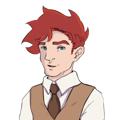Literally Graphic reviewed Beautiful darkness by Marie Pommepuy
Review of 'Beautiful darkness' on 'Goodreads'
3 stars
-Original Review 2015-
Besides the perhaps somewhat overly pretentious sounding black blurb, this graphic novel was perfect!
I think anyone who has felt their innocence and good will to their fellow human being ground down by cold backstabbing and selfish reality can sympathize with our main character! Don't be fooled by the pretty pictures though, this story requires a strong sense of dark humor to stomach.
Speculative fiction meets darkly imaginative modern fairy tale!
-Updated Review 2019-
And today is another old favourite book that I wanted to pull back out and revisit. Beautiful Darkness written by Fabien Vehlmann, illustrated by the pseudonym Kerascoet, and translated from French to English by Helge Dascher. Published originally in 2009 by Dupuis in French and republished in English by the Canadian publisher Drawn and Quarterly in 2014. Content Warning: violent imagery.
As indicated by the original language, the author is in fact French. Fabian Vehlmann has also written such books as Isle of 100,000 graves, Satania, Green Manor. II, The inconvenience of being dead, and Last days of an immortal, among others. None of which I've read, so I can't comment.
The artist, however, is not literally a singular individual named Kerascoet. It's actually a husband and wife team named Marie Pommepuy and Sébastien Cosset. According to their bio they didn't want to have their names take up so much space so they decided to name themselves after Marie's parent's village in Brittany. They have also apparently done some writing for children's books, but the other books I've read that they've illustrated (and I should re review) Miss don't touch me, and apparently not another book I thought they did. They also did work entitled Beauty that is apparently on my TBR.
As mentioned in my original review, the official synopsis for this book is pretty pretentious. "Kerascoët’s and Fabien Vehlmann’s unsettling and gorgeous anti-fairy tale is a searing condemnation of our vast capacity for evil writ tiny. Join princess Aurora and her friends as they journey to civilization's heart of darkness in a bleak allegory about surviving the human experience. The sweet faces and bright leaves of Kerascoët’s delicate watercolors serve to highlight the evil that dwells beneath Vehlmann's story as pettiness, greed, and jealousy take over. Beautiful Darkness is a harrowing look behind the routine politeness and meaningless kindness of civilized society." I think the attempt to insinuate that humanity is generally as evil as the characters in this book never sat well with me, but I did rate it 5 stars, so maybe I did.
A pretty deeply unsettling book, I would count Beautiful Darkness as part of the horror genre. So that's only to be expected. There's definitely a lot of character death and the centre piece for most of the story is a girl's corpse (how she died we don't appear to know - although it likely involves the other human man). I think the most enjoyable part of the book, for me, is the way it subverts all the cutesy sort of tiny people stories I grew up on (ex. the borrowers). Also the art is amazing! 5 stars.
On the hand, my main critique of the comic is that I really don't think it's an honest look at the entirety of the human resistance, which I think can be full of so much positive. Obviously the focus is on the evil of humanity, but I feel like even that doesn't necessarily be so insurmountable. I think to be more precise, this sort of helplessness is really most prevalent only when we are uncompromisingly individualistic. No one in the story willingly cooperates or even seems to really like each other. Quite literally, might makes right - which is still amusingly odd when wrapped in such a sweet art style - but not as demonstrably true as the synopsis seems to indicate.
As far as gender representation in this comic, my impression is that the majority of characters is that they are female identifying. That said, that does mean that this tale of back stab after back stab means that (especially when it comes to the top dog villain) there's more then a little cattiness. I always feel a bit defensive about men writing female cattiness, but I'm not sure it's a 100% I would die on a hill for it idea, although I generally have a be suspicious of almost anything policy. Everyone is white. The only romance is heterosexual. Class is, least surprisingly, not addressed at all.
While I still did enjoy some parts of this book (have you seen the art?) on further reflection, and personal development (my original review came out in 2015) I will be knocking this book down a few stars to goodread's "I Liked it" 3 stars.

